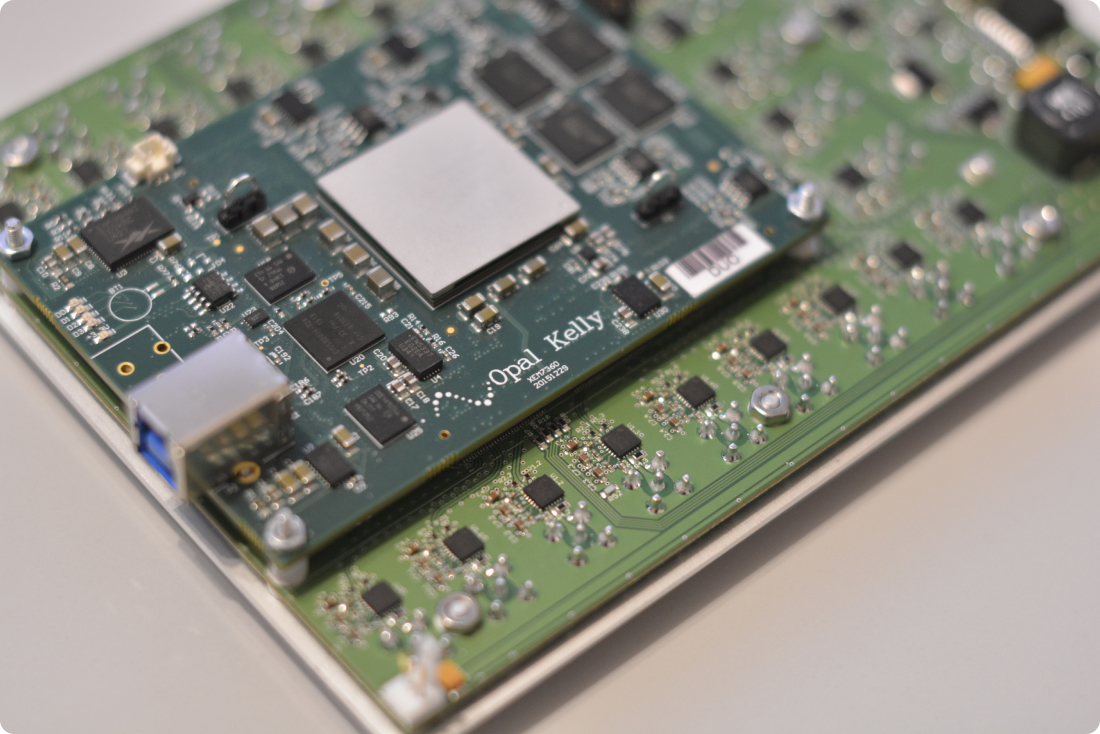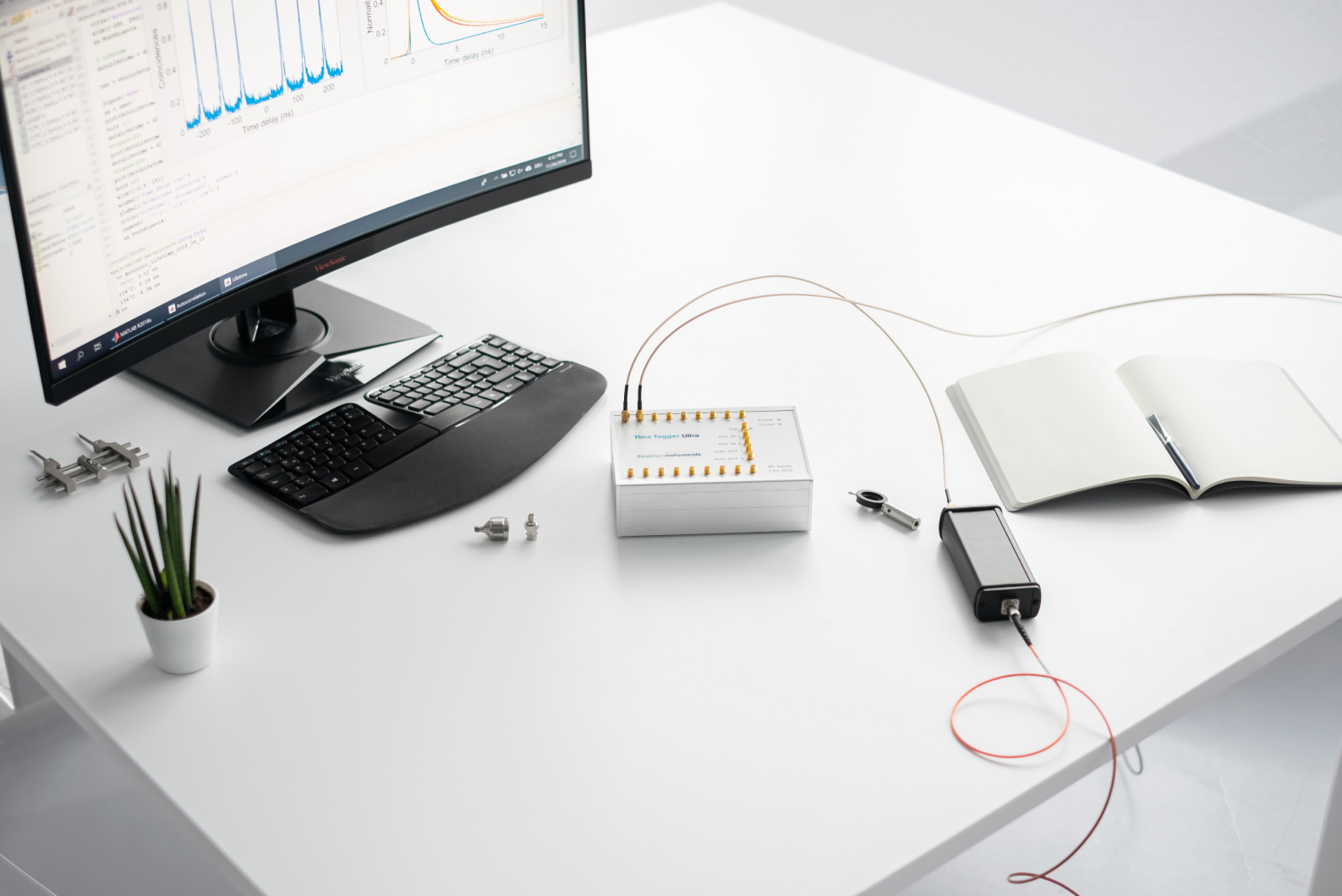To make an apple pie from scratch, you first must create the universe.
The Opportunity
Helmut Fedder, co-founder and CEO of Swabian Instruments, began studying the challenge of time tagging for quantum optics nearly a decade ago. During his years studying physics in Germany, Sweden, and the Netherlands, Helmut became a research group leader in quantum optics, FPGA development, and experiment design. As he studied, Helmut developed ideas for commercial products, built on top of leading-edge Opal Kelly FPGA modules, that would substantially aid other scientists and researchers in their studies of quantum optics. Swabian Instruments GmbH emerged from the Physics Department at the University of Stuttgart in 2016, when Helmut Fedder and co-Founders Michael Schlagmüller and Markus Wick took the leap into the commercial world.
The Solution
Today, significant innovations are often made possible through a chain of value-added tools. Sometimes proprietary, sometimes open source, these tool chains incrementally add value and provide efficiencies for the developers at the next level. Opal Kelly and Swabian Instruments both hold important positions in these tool chains.
A good tool gets out of the way and enables a craftsman to do their job better, faster, or more efficiently.
Products built by Swabian Instruments and Opal Kelly combine to provide two seamless layers of technology that deliver instrumentation for easy and intuitive data acquisition and signal generation in the quantum optics space. The two firms share similar design philosophies, as both companies strive to encourage accelerated design and development.
Opal Kelly’s philosophy is to make the ‘reusable stuff’—using FPGA boards for PC to device interconnection—frictionless. Its customers, and customers’ customers, are developing staggering advances in medicine and technology. Rather than wasting time building their own FPGA modules, interfaces, and APIs, their time is focused on the really hard work of their core competencies—inventing world-changing approaches and products.
“Like Opal Kelly, our goal is to give scientists powerful tools so they have more time for leading-edge research. Our combined enabling technologies deliver data acquisition tools that are super easy to use and accelerate experiments,” says Helmut Fedder, co-founder and CEO of Swabian Instruments.
Swabian starts with the Opal Kelly XEM7360-K410T, a high-performance, high-gate-count FPGA module and the powerful FrontPanel interface that eases the way for Swabian’s value-add.

The XEM7360 is a USB 3.0 integration module based on the Xilinx Kintex-7 FPGA. The XEM7360 is ideal for the high-performance timing measurement and I/O integration needs of Swabian.
Opal Kelly’s FPGA modules include the FrontPanel SDK, an easy-to-use, robust API for communication, configuration, and interfacing to PCs, Macs, or Linux hardware. FrontPanel handles all the interaction between the software and the FPGA internals, dramatically reducing the time and effort required to interface to a design.

Swabian Instruments products, built on top of the Opal Kelly XEM7360, are easy-to-use, high-performance, and packed with useful features. “Opal Kelly modules are really carefully designed and the ease of use that the libraries provide is the key distinguisher for our work,” Fedder says.
Swabian implements streaming time-to-digital converters that covers a frequency range from DC to about 400 GSa/s directly in the FPGA fabric. Processing of time stamps is performed at the software level. This provides the flexibility and extensibility of a software solution, while maintaining the best possible timing resolution and performance of a dedicated hardware.
“We strive to make data acquisition and signal generation as easy and intuitive as possible. Our goal is to help scientists maximize the time they spend on actual research. We achieve this by empowering researchers with software and hardware tools that require minimal programming efforts and are packed with useful features. We push the boundaries of what is possible with modern data acquisition and signal generation,” Fedder says.
“We do the most nerdy things you can do with an FPGA. Our FPGAs are 95% full. We work at the gate level and attach to digital converters to measure time—pushing to 2.7 picoseconds, far in the microwave domain—directly on the FPGA. We push the Opal Kelly modules to their extreme limits,” Fedder says.



